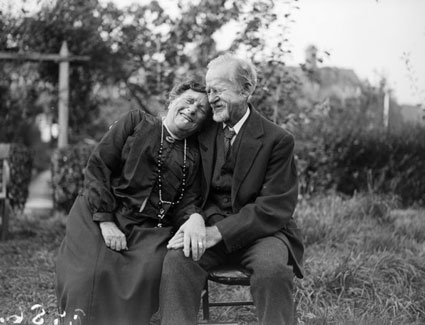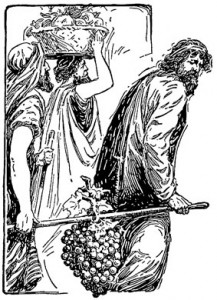Jul
18
2009

Alexander Schmemann writes:
“O Lord our God, crown them with glory and honour!” says the priest after he has put the crowns on the heads of the bridal pair. This is, first the glory and honour of man as king of creation: “Be fruitful and multiply and replenish the earth, and subdue and have dominion…” (Gn. 1:25). Each family is indeed a kingdom, a little church, and therefore a sacrament of and a way to the Kingdom. Somewhere, even if it is only in a single room, every man at some point in his life has his own small kingdom. It may be hell, and a place of betrayal, or it may not. Behind each window there is a little world going on. How evident this becomes when one is riding on a train at night and passing innumerable lighted windows: behind each one of them the fullness of life is a “given possibility,” a promise, a vision. This is what the marriage crowns express: that here is the beginning of a small kingdom which can be something like the true Kingdom. The chance will be lost, perhaps even in one night; but at this moment it is still an open possibility. Continue reading
Comments Off | tags: Alexander Schmemann, Communion, Marriage, Veil | posted in Christian Life, Quotes
Apr
15
2009
“How is the land, is it fat or lean? Are there trees in it or not? Make an effort then to get some of the fruit of the land.” Now the time was the time of the first ripe grapes… Then they came to the valley of Eshcol and from there cut down a branch with a single cluster of grapes; and they carried it on a pole between two men. (from Numbers 13)
But Christ has indeed been raised from the dead, the firstfruits of those who have fallen asleep. (1 Corinthians 15:20)
 The Tabernacle is an architectural model of the world. Each of the seven speeches of the Lord (Exodus 25-31) is introduced with a variant of the phrase “Then Yahweh spoke to Moses, saying.” The seven speeches follow the pattern of the seven days of the Creation week, and also the seven feasts in Leviticus 23.
The Tabernacle is an architectural model of the world. Each of the seven speeches of the Lord (Exodus 25-31) is introduced with a variant of the phrase “Then Yahweh spoke to Moses, saying.” The seven speeches follow the pattern of the seven days of the Creation week, and also the seven feasts in Leviticus 23.
The Table of Showbread corresponds to both the grain and fruit created on Day 3, the Feast of Firstfruits and to the Asension of Moses.
This pattern began in the garden, when after Adam’s “Red Sea” death and resurrection, he was united to his bride by Covenant. He “ascended” as covenant head of a new family, with God’s one Law.
On the table in the Holy Place were twelve loaves of bread and jugs of beer (from grain), and later, wine. Like the manna and the grapes of Eshcol, these were a promise of rest and rule with God on a future Sabbath as priest and king. Here is the last supper. As with Adam and Moses, this initial promise of wine was followed by exposure to the serpent for testing under the Law – Pentecost.
Just as the marriage covenant of Adam and Eve at Firstfruits is really a betrothal of their united marriage to God on Day 7, so this Table of Israel was a promise of future glory to the whole world at the final Sabbath feast, Tabernacles.
To use Doug Wilson’s phrase, human marriage is “manifest glory.” It is a Day 3 picture of the Day 7 rest to come at the union of heaven and earth.
Comments Off | tags: Adam, Betrothal, Booths, Doug Wilson, Firstfruits, Holy Place, Last Supper, Manna, Marriage, Numbers, Pentecost, Tabernacle, Tabernacles, Wine | posted in Biblical Theology



























